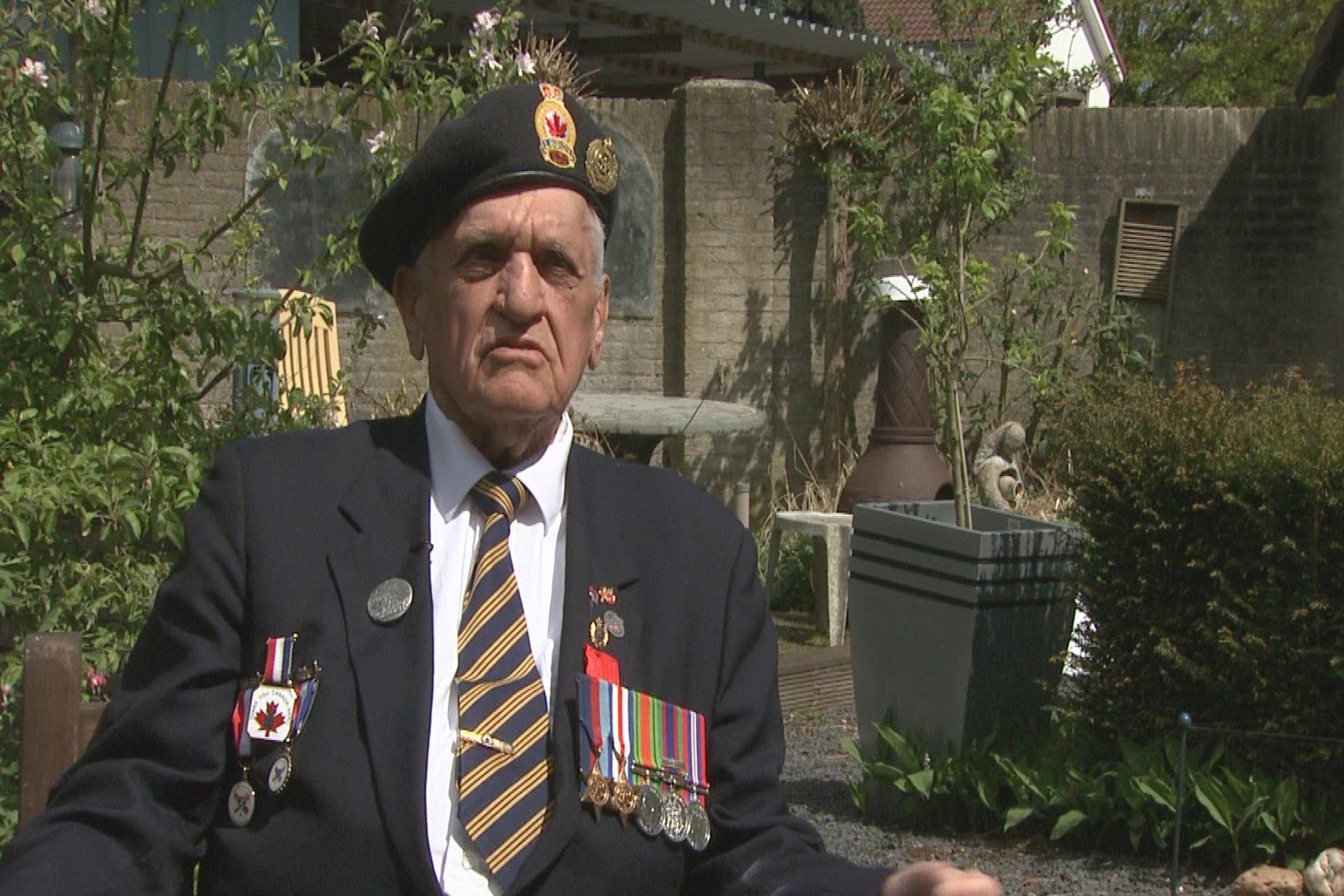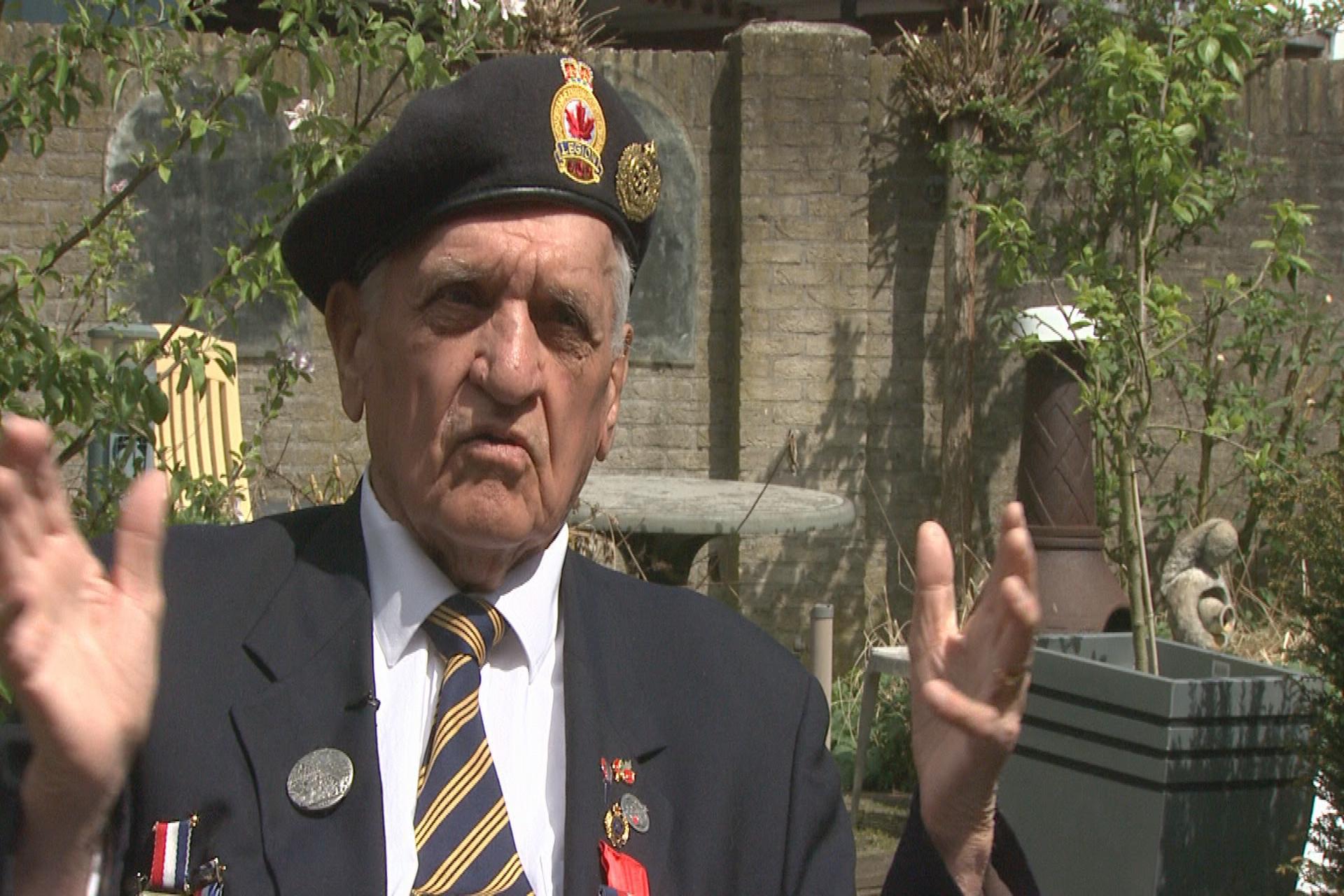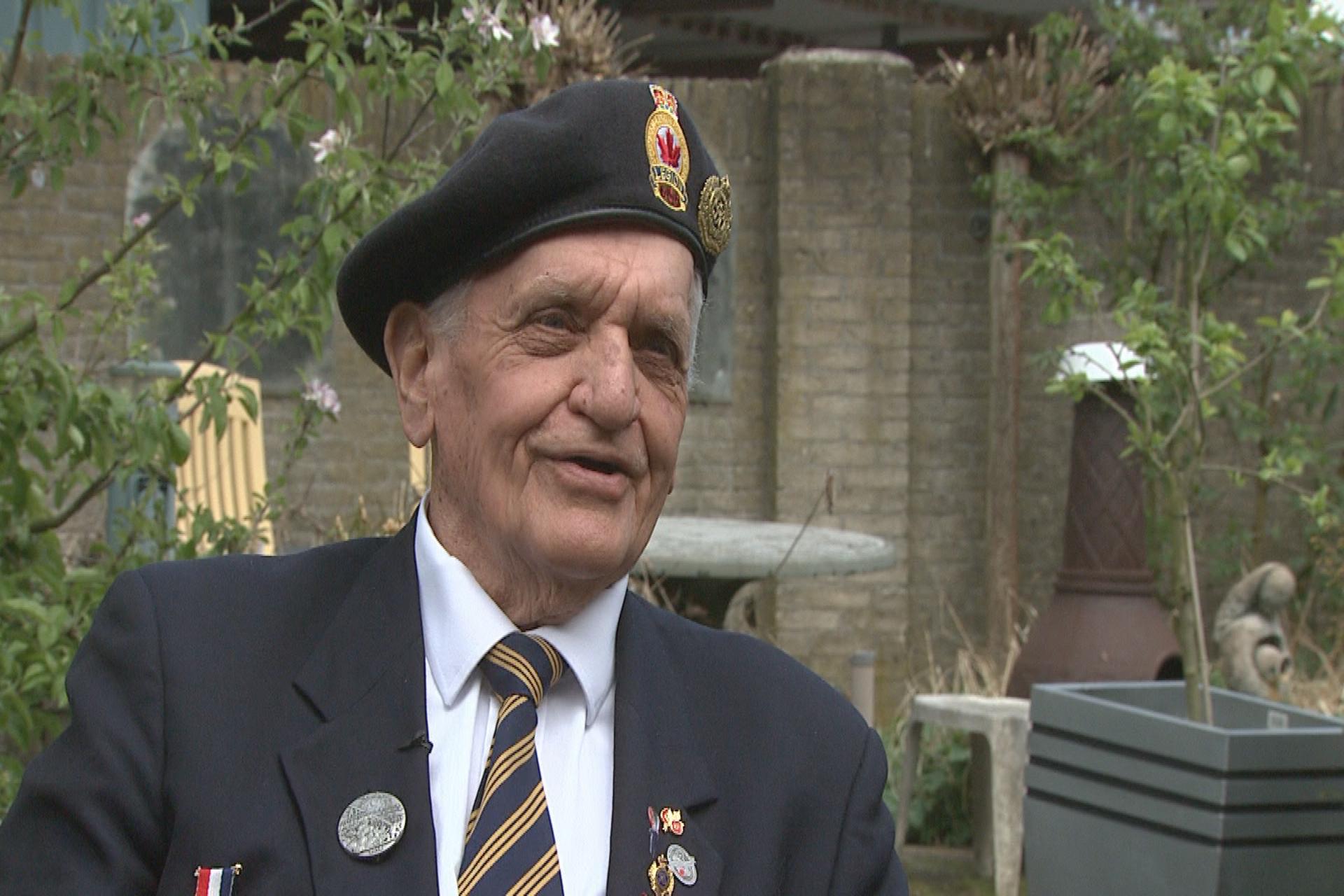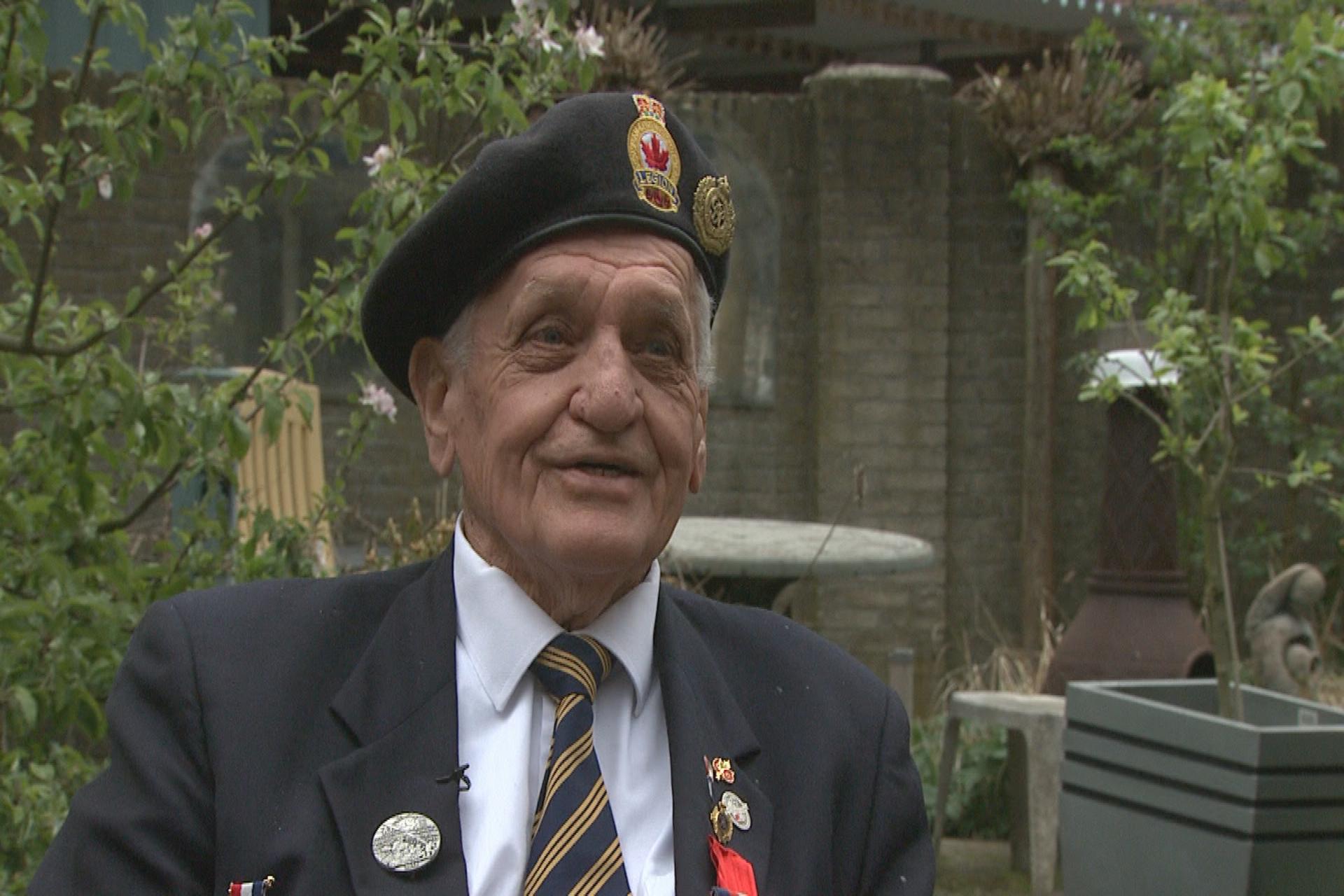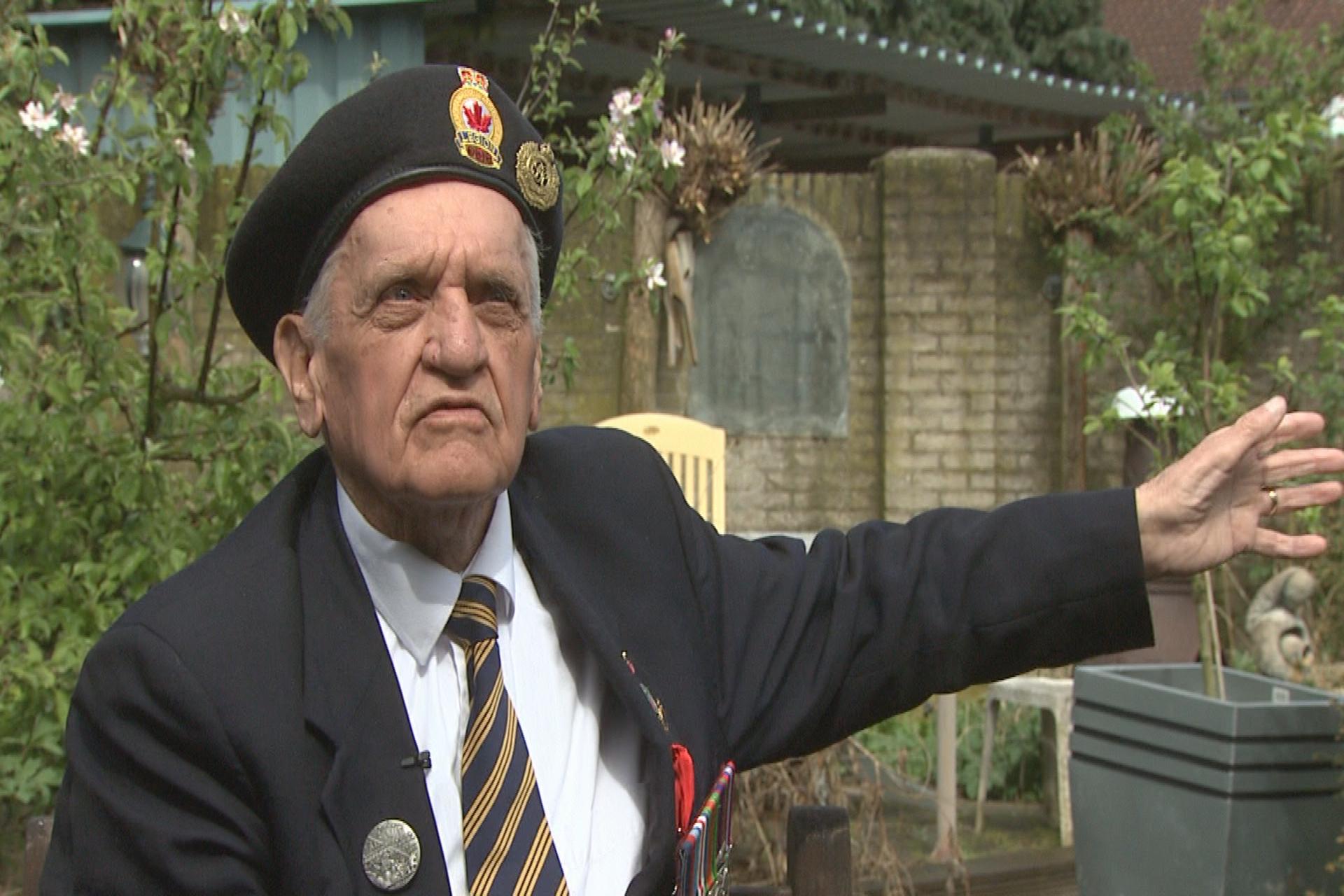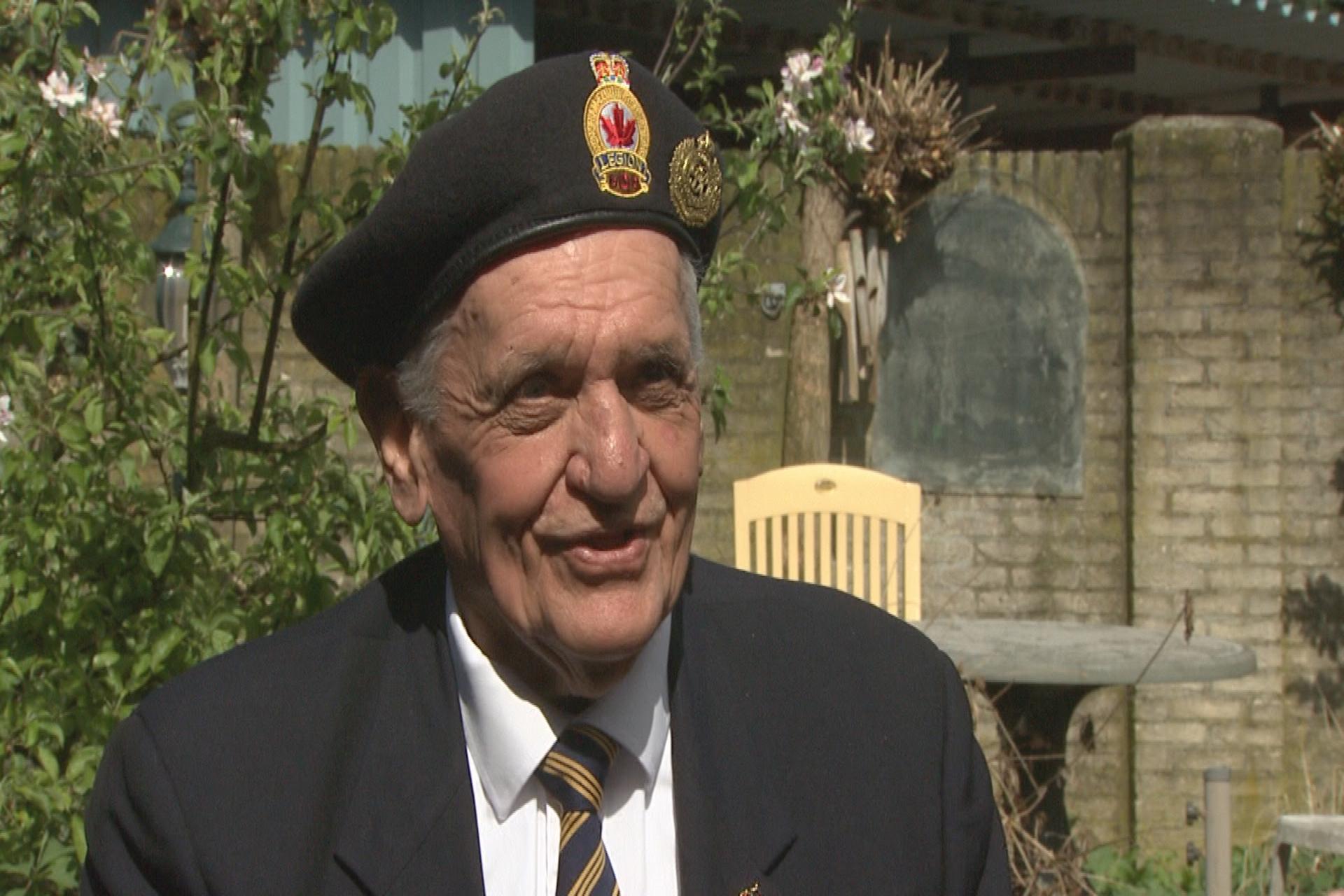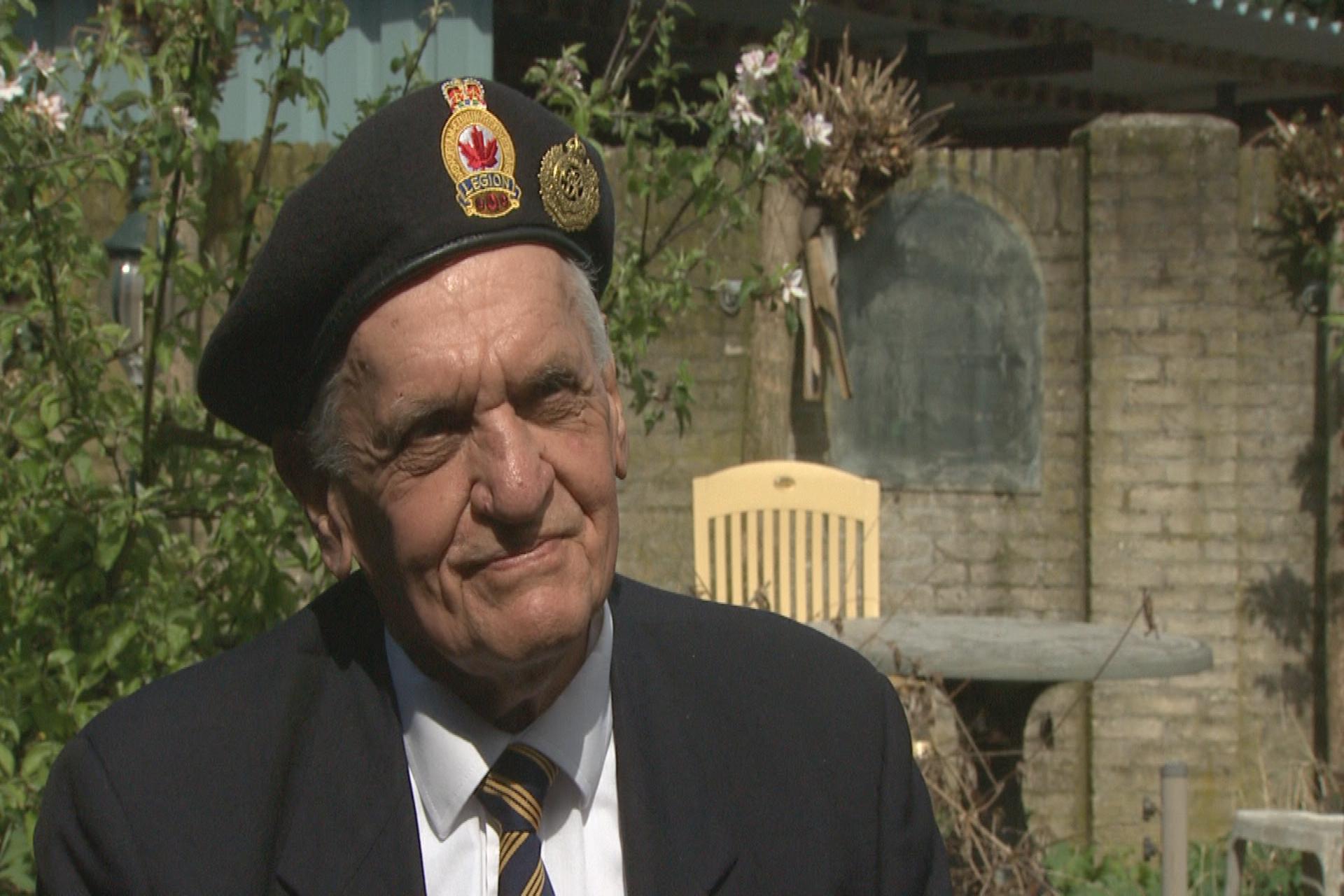The Sounds and Sights of Fighter Planes
Heroes Remember
The Sounds and Sights of Fighter Planes
Transcript
As soon as we got up to Falaise
we did a lot of bridging and stuff around there.
Once we defeated the German Army there,
then we moved up to the Seine River and
then we assaulted it, crossed,
we took the 4th Div Infantry across there
and we never had much…
we had one or two casualties there but
our sister unit they lost five wounded
by the bridge area from the 88’s
that came over.
So we got out of that scrap pretty good.
And up the river a bit we built a bridge on it.
In the middle of the Seine River there was
an island so we had to put two bridges,
one on each side to the Island and
then on the other side to the mainland.
We got as far as Saint-Omer and
all at once about twelve;
the armies were moving fairly fast,
maybe twenty five or thirty kilometres
a day at that time, the 2nd British Army and
the Canadian Army was on the left.
So you never know where the front
was going to be at that time, you know,
you kept moving up behind them,
they’d move.
So then we come to a period there we
kind of had a little bit of a lull and
then all at once we were in a
big rush and we were rushing towards
Brussels because the second army had
already went through Brussels and
they went through that left part of it.
So we were taken to this Echelle
(sp) l I think it was for a staging,
a Bridge Too Far, now there was
fourteen thousand engineers on this job to
look after every bridge if it was blown.
If they happen to be blown you were
assigned a certain unit that would take
that bridge and repair it and keep going.
And it even had it right down to the
amount of trucks and everything,
the personnel that would be in that there.
It was a Sunday afternoon on September 17th,
at about four o’clock we look up and
there must have been about two
hundred Dakota, DC 3’s all loaded
down with parachutists.
And as they went over us about
maybe five or six miles you could see
the paratroopers start coming down.
And then about an hour after that when
that kind of slowed down then the
gliders came in behind them to
land in behind them.
And that was the 101st Airborne Division.
What they did was when they dropped there,
when you come up to them after,
they were dug in alongside of the road
on each side and five hundred yards out
they were dug in out there.
In the meantime they’re fighting all the
time on both sides of the road.
We haven’t actually cleared it yet.
So you have to wait until maybe
the tanks would go in ahead in there
to open it up and you’d maybe go
another three or four miles.
And then there was,
I think it was the foot bridge,
Sunnege (sp) that was it,
they blew the bridge there.
Well, that held us up about
another day or two.
We were supposed to be
there in 48 hours to relieve the
1st British Airborne and
that set us back almost,
it was more than 48 hours by the time
the bridge was replaced there.
Then as we went up, I had never seen
so many planes in the air in dogfights.
There were Focke-Wulfs, Germans and
there were Thunderbolts, Americans and
all kinds of gliders and stuff going
over top of us being pulled
by larger planes, you know.
Description
Mr. Sommerville tells about building bridges while the fighting continues overhead.
Donald Sommerville
Mr. Donald Sommerville was born September 19, 1922 in Chatham, Ontario. Mr. Sommerville grew up on a farm and attended public school. He and his buddies decided to join the army and left for overseas as part of the Royal Canadian Engineers. Mr. Sommerville became part of the 23rd Royal Canadian Engineers, 3rd Canadian Infantry Division. He takes pride in the service provided as part of “Operation Duck” - an operation that lasted nine days before the war ended. Mr. Sommerville has returned to Holland for commemorative anniversaries. He now resides in Ontario with his family.
Meta Data
- Medium:
- Video
- Owner:
- Veterans Affairs Canada
- Recorded:
- May 6, 2015
- Duration:
- 4:03
- Person Interviewed:
- Donald Sommerville
- War, Conflict or Mission:
- Second World War
- Location/Theatre:
- France
- Battle/Campaign:
- Liberation of Holland
- Branch:
- Army
- Units/Ship:
- Candian Royal Corps of Engineers, Electricians and Mechanics, 2nd Tank Troop Workshop
Related Videos
- Date modified:



